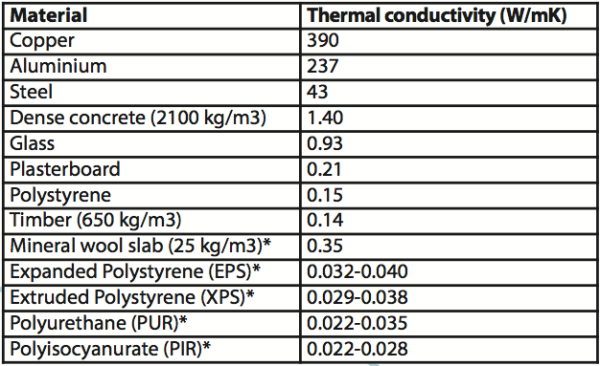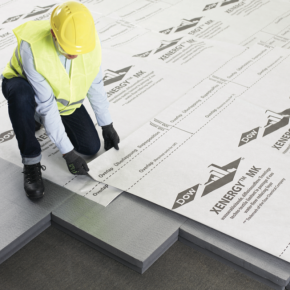
Improving insulation by lowering thermal conductivity
Materials that have lower thermal conductivity provide better insulation for buildings and, consequently, reduce heating or cooling costs. They also give architects greater design flexibility, permitting thinner walls and roofs that still comply with Building Regulations.
Joan Ferrer, technical sales manager at Dow Building Solutions, takes a look at how the construction industry can look to improve lambda values in the future in the latest issue of ABC+D magazine.
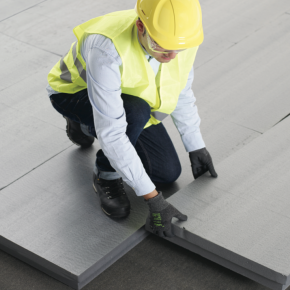
“Metals have far higher thermal conductivities compared to other materials, with fibre and foam products offering the lowest..” Joan Ferrer, Dow Building Solutions
Thermal conductivity is the amount of heat that goes through a certain thickness of material at a distinct temperature (lambda – W/mK is the recognised SI unit). Different materials provide varying insulating properties as the rate at which they transfer heat differs between them. In the case of cellular material, the skeletal structure of the material is directly proportional to this factor. The table below shows the typical thermal conductivity of several building materials:
Metals have far higher thermal conductivities compared to other materials, with fibre and foam products offering the lowest. The most effective materials are foamed (EPS, XPS, PUR and PIR), and they have a range of values as numerous other factors influence their thermal conductivity:
1 Cell gas
Closed cell materials contain a certain amount of gas trapped inside the material’s structure, improving overall thermal performance – gases with lower thermal conductivity deliver better performance. Several factors affect which gas is chosen, including costs, available technology, the Ozone Depletion Potential (ODP) and Global Warming Potential (GWP) of the gas, relevant Environmental Regulations involved and target lambda values.
Open cell foams don’t retain the initial insulating gas, hence thermal conductivity is severely depleted as it is largely comprised of air.
2 Thermal convection of cell gas
The mobility of gas molecules within closed cell foamed materials is another factor to consider causing varying levels of thermal convection. Gas convection has a minimal effect on thermal conductivity as the foam cells are very small, limiting the movement of the molecules inside them, so this factor is not currently considered highest priority.
3 Thermal radiation
If a material has a temperature greater than absolute zero (-273 oC) it emits thermal radiation. The orange-red colour in a hot metalwork is due to the radiation in the visible range of the electromagnetic spectre, however it is the infra-red radiation emissions that are invisible to the naked eye that we need to focus on.
How can we further improve foamed materials?
1 Improvements in the solid material’s thermal conductivity
Each material has its own intrinsic properties, limiting the scope of work in this area. XPS products, for example, already have one of the lowest rates of thermal conductivity and are hard to improve upon. The remaining gains will be found by precision changes to material formulation, foam architecture and product design.
2 Improvements in the cell gas thermal conductivity
This area has the potential to be much more promising, especially as this factor accounts for 60 to 70% of overall thermal conductivity. The latest HFO blowing agents are expected to be as environmentally friendly as Carbon Dioxide, while their performance is expected to be on par with existing HFC gases. Manufacturers will swiftly move to HFO formulations when they come to market to comply with Environmental Regulations that aim to phase out the use of HFC.
3 Improvements in thermal radiation
There are two major options that can be considered to make substantial gains in this area:
• Adding solid particles that may absorb/reflect IR (Infra-Red) radiation
• Adjusting the cell size of the foam in the production process to an optimum range
There are already several technologies leveraging the first of these strategies, adding particles to scatter and reflect some of the radiation, reducing this contribution to the overall heat transfer.
Latest news
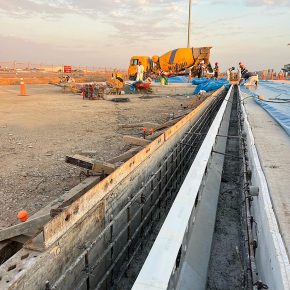
22nd January 2025
AWMS Gatic UltraSlot meets rigorous drainage demands at Peru’s new ‘Airport City’
The new Jorge Chávez Airport in Peru is one of the most pioneering airport projects ever undertaken in South America – it features Gatic UltraSlot from Alumasc Water Management Solutions (AWMS).
Posted in Articles, Building Industry News, Building Products & Structures, Building Services, Case Studies, Civil Engineering, Concrete, Cement, Admixtures, Drainage, Drainage Services, Drainage, Guttering, Soffits & Fascias, Facility Management & Building Services, Hard Landscaping & Walkways, Landscaping, Pipes & Fittings, Plumbing, Posts, Restoration & Refurbishment, Retrofit & Renovation
22nd January 2025
Registration opens for LIFTEX 2025 (11 - 12 June)
Registration has opened for LIFTEX 2025. Now in its 37th year, the show is the UK’s only dedicated exhibition for the lift, escalator and access industry and takes place only once every three years.
Posted in Accessibility, Articles, Building Associations & Institutes, Building Industry Events, Building Industry News, Building Products & Structures, Building Regulations & Accreditations, Building Services, Exhibitions and Conferences, Facility Management & Building Services, Health & Safety, Restoration & Refurbishment, Retrofit & Renovation
22nd January 2025
Saniflo’s Saniplus UP facilitates garden retreat by Shack Cabins
Thanks to a Saniplus UP from Saniflo, a new garden retreat in the capital has been elevated to a new level of comfort and convenience.
Posted in Articles, Bathrooms & Toilets, Bathrooms, Bedrooms & Washrooms, Building Industry News, Building Products & Structures, Building Services, Case Studies, Drainage, Facility Management & Building Services, Garden, Interiors, Pipes & Fittings, Plumbing, Restoration & Refurbishment, Retrofit & Renovation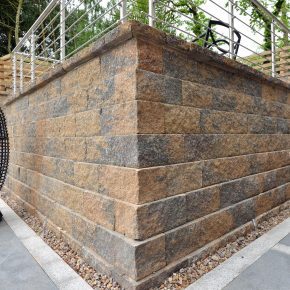
22nd January 2025
Groundworkers - improve your tender success rates with Tobermore's Secura Portal
For groundworkers, tendering residential retaining wall projects can be a time-consuming and complicated process. The key is to tender using Tobermore’s Secura modular concrete block retaining walls rather than the default masonry specification & the Secura Portal, an online tool.
Posted in Articles, Bricks & Blocks, Building Industry News, Building Products & Structures, Building Services, Building Systems, Case Studies, Civil Engineering, Concrete, Cement, Admixtures, Facility Management & Building Services, Hard Landscaping & Walkways, Information Technology, Innovations & New Products, Landscaping, Posts, Restoration & Refurbishment, Retrofit & Renovation, Walls
 Sign up:
Sign up: 